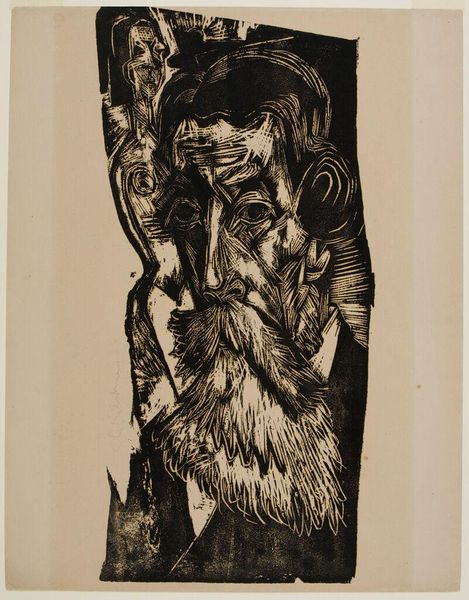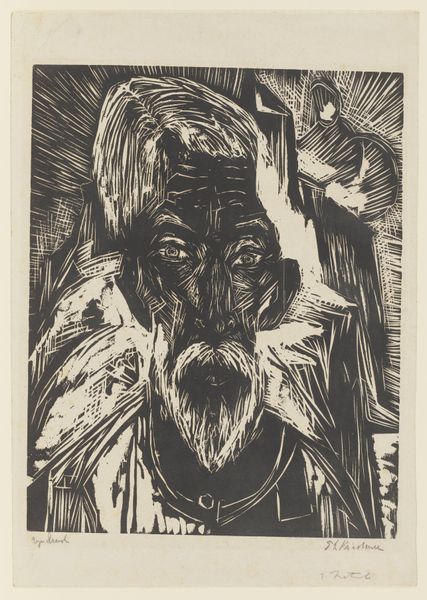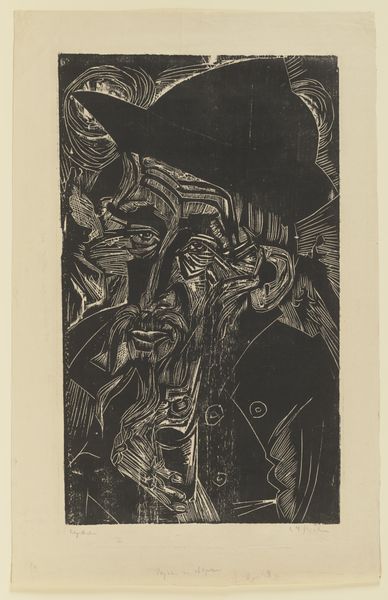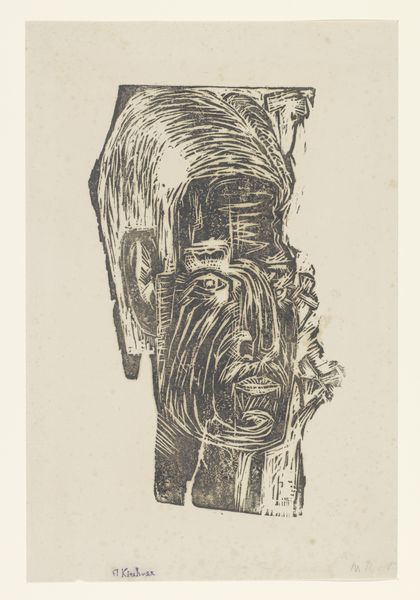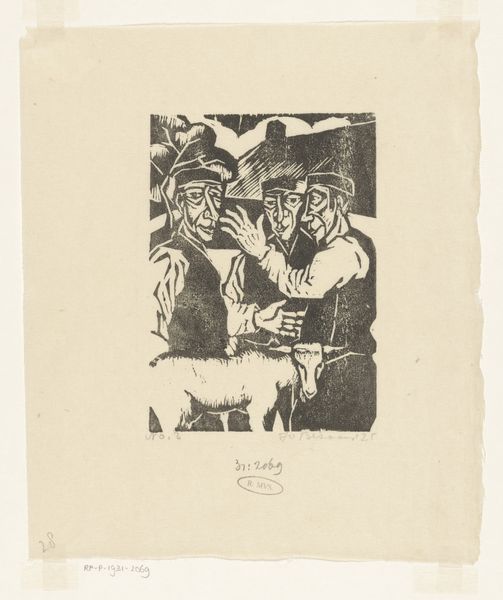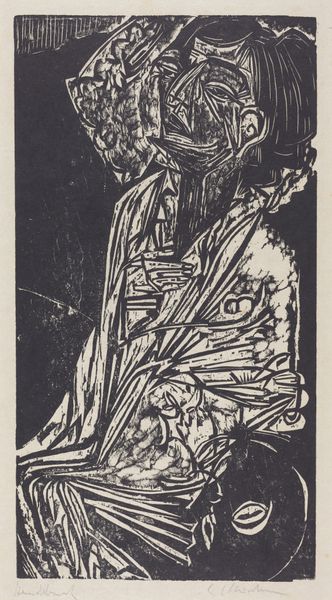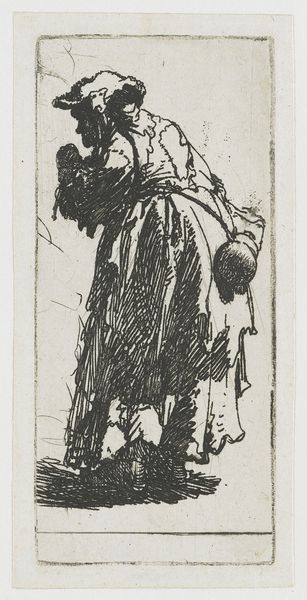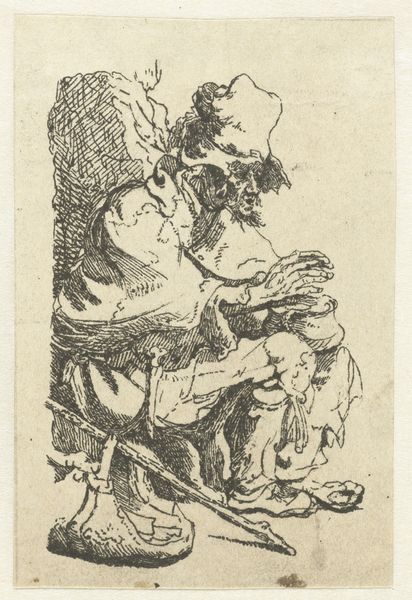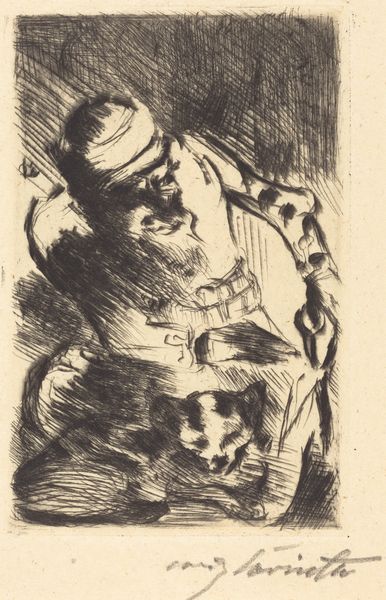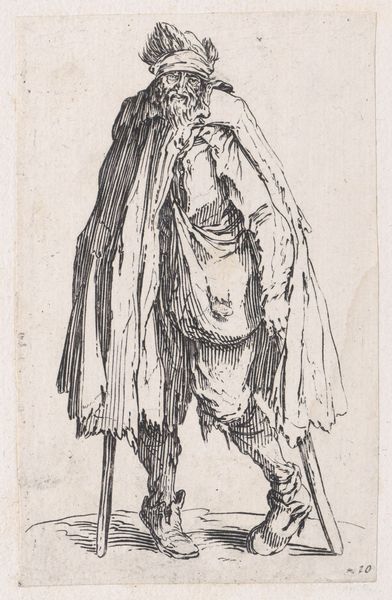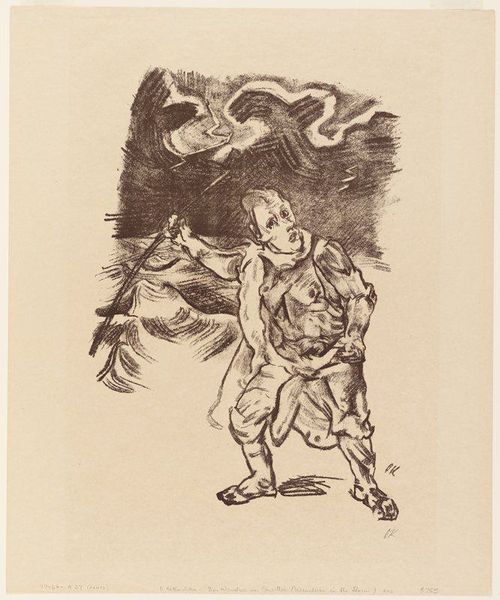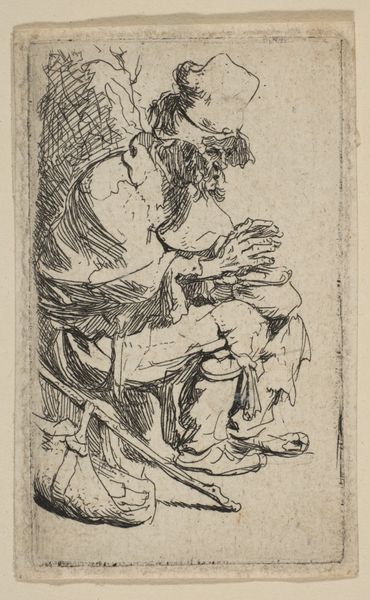
drawing, woodcut
#
portrait
#
drawing
#
caricature
#
caricature
#
german-expressionism
#
expressionism
#
woodcut
Copyright: Public Domain
Editor: So, this is Ernst Ludwig Kirchner’s "Head of Ludwig Schames," created in 1918 using woodcut. It strikes me as both powerful and unsettling, particularly with that almost mask-like quality to the face and figure. What do you see in this piece, with its intense expressiveness? Curator: This image acts as a potent symbol, hinting at something beyond the literal portrait. Note the severe contrast, the almost brutal carving of the wood. It evokes a feeling of cultural anxiety, almost premonition, doesn’t it? The jagged lines seem to tear into the figure. Editor: Absolutely, I noticed the aggressive lines immediately. The figure in the background, too, adds to that sense of unease. What does it signify? Curator: Consider the period – 1918, the end of World War I. Kirchner and his contemporaries experienced societal upheaval. The rough texture suggests trauma, perhaps the shredding of social norms, maybe even the individual psyche. The distorted background figure hints at the fractured nature of identity itself. Is Schames presented here as an individual, or does he become a representation of the unease and anxieties that characterized that time? Editor: So, it's less about the man himself, and more about what he represents in that moment in history? Curator: Precisely. The starkness forces us to confront a deeper psychological landscape. The visual language employed isn't just about Schames; it's about the collective anxieties that gripped Germany. The print becomes a mirror, reflecting back the fears of a nation. The looming shadow to the left and simplified dark contours could reference earlier Medieval Totentanz depictions as a memento mori. Do you agree? Editor: I do, seeing the print in this context is insightful. It adds another layer of understanding. The portrait is no longer just a portrait; it’s a symbol of a specific, turbulent time. Thank you! Curator: It's through these layers of historical and cultural interpretation that a work like this truly comes alive, and teaches us more about the cultural memory and continuity.
Comments
stadelmuseum about 2 years ago
⋮
The portrait of Frankfurt’s “best and most genteel” art dealer, Ludwig Schames (1852–1922), is one of those Kirchner executed in Kreuzlingen. The artist cut it on the back of the irregularly curved block of wood whose other side he had used for the “Head of a Sick Man” (Städel Museum, inv. no. 65611) . The second state of the Schames portrait was published in an edition of at least 120 – which Kirchner painstakingly printed by hand with a brayer – as the gift of the year for the “members of the Frankfurter Vereinigung für Neue Kunst”.
Join the conversation
Join millions of artists and users on Artera today and experience the ultimate creative platform.
